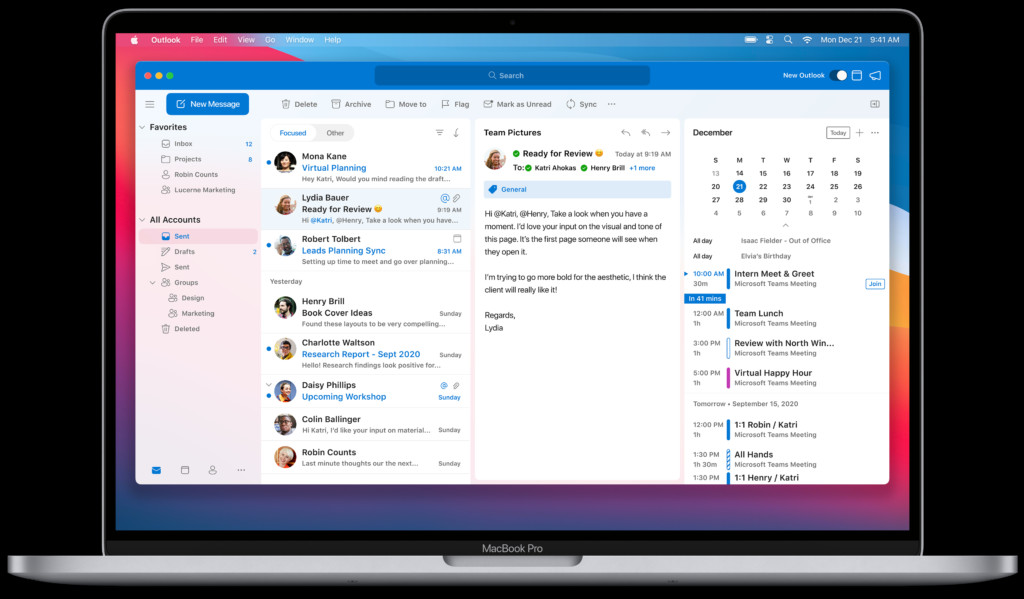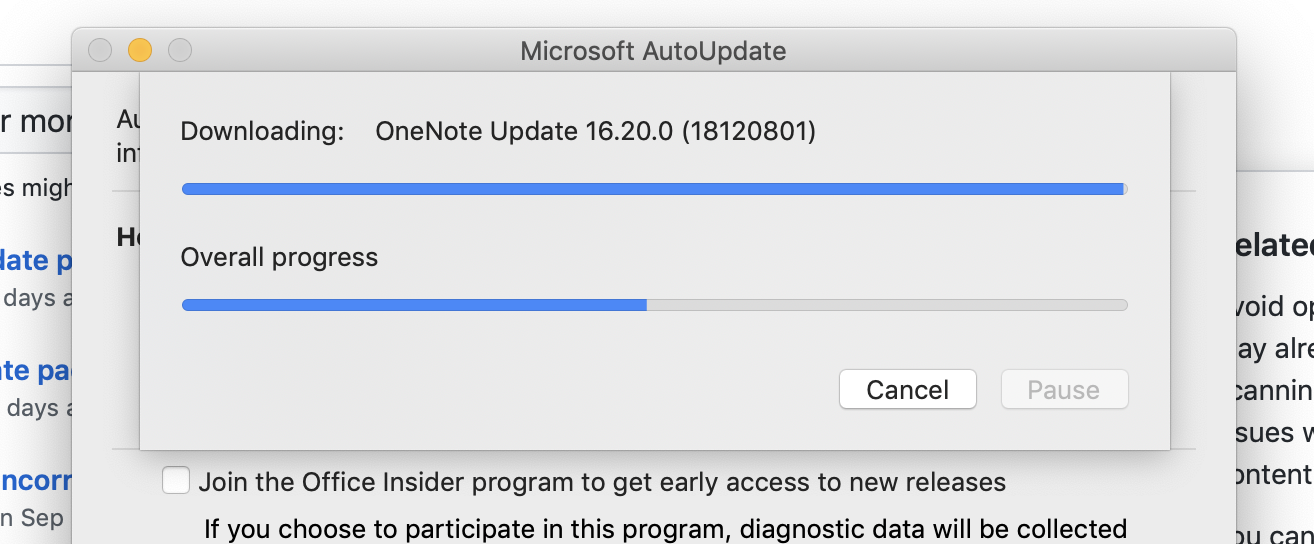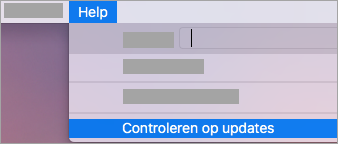Microsoft has announced a new update engine for Microsoft Edge on macOS devices, with users running the Canary build getting it as we speak.

- Aug 13, 2020 Via a dedicated update application, like “Microsoft AutoUpdate” for Microsoft Office on Mac If an app doesn’t include the ability to update itself, you may need to update it manually. First find out what version of the app you are running by launching it, clicking “App Name” in the top-left corner of the screen then choosing “About.
- Update Office from the Mac App Store. If you downloaded Office from the Mac App Store, and have automatic updates turned on, your apps will update automatically. But you can also manually download the updates: Open the Mac App Store from your Dock or Finder.
Microsoft AutoUpdate (MAU) version 3.18 and later includes the msupdate command-line tool. The msupdate tool can be used to start the update process for Microsoft applications produced for Mac, such as Office. We would like to show you a description here but the site won’t allow us. Microsoft has announced a new update engine for Microsoft Edge on macOS devices, with users running the Canary build getting it as we speak. The company explains that the AutoUpdate system that.
The company explains that the AutoUpdate system that was originally used by Microsoft Edge was a little bit confusing given it’s also used by Office applications, with the process overall also being rather slow.
So the company has started the work on a native update system for Microsoft Edge on macOS, with the new experience currently available in the Canary builds of the browser for Intel chips. Microsoft explains it’ll also be included in the builds aimed at Apple Silicon shortly.
New update system currently in testing
The new update system is supposed to make the process overall feel more seamless, especially because the updates will now be installed in the background all automatically.
“The new update experience is now Edge-native. It will solely be responsible for updating Edge-related products and will not be affected (e.g. blocked) by other pending product updates. Updates will happen automatically and silently, and no out-of-Edge notifications/toasts will be shown. edge://settings/help now more consistently reflects update status and allows seamless updates. In-app update notifications are promptly reflected when an update becomes available,” Microsoft explains.
The Redmond-based software giant hasn’t provided an ETA as to when this feature is scheduled to land in the production channel, but version 91 is projected to go live in the stable build in the week of May 27.
The transition to the Chromium engine allowed Microsoft to bring Edge browser to more platforms, so in addition to Windows 10, its application is now also available on Windows 7, Windows 8, Windows 8.1, macOS, and Linux. At this point, however, Edge for Linux is still in preview stage, but it should reach the stable channel later this year.

Macs are usually pretty solid machines. But they arestill machines. Operating on layers and layers of ones and zeros. Something somewhere is going to go wrong. Usually, a restart or reinstall does the trick.
But what do you do when weird stuff starts happening that you can’t exactly put your finger on? Like the Bluetooth won’t scan or the battery percentage will refuse to update. It’s time to reset the PRAM and SMC.
What exactly does that mean? Read on to find out.

What Is PRAM (Parameter RAM)?
PRAM (Parameter RAM) is the memory that stores the default values for the nitty gritty details of your Mac, the core data, if you will. It contains stuff like the alarm clock setting, mouse scaling, start up disk, virtual memory and speaker volume among other things. To see a full list, check out Apple’s support page.
If there’s something wrong in any of the code on PRAM, it can have a big effect on your Mac’s performance. Resetting the core data to its default is a great way to restore things to way they are supposed to be.
The Last Resort
You should think of resetting PRAM as a last resort. Because it has to do with the core data of the OS, it might change some settings, or reset your data. So before jumping in to resetting PRAM, you should try some of these remedies first.
- Force quit (Command+Option+Esc) all the running apps.
- Log off and log back in.
- Turn it off and on again. Not just restart, perform a hard shutdown.
- Shut down the mac, keep it turned off for a minute or so. If you can, remove the battery for some time as well.
After doing that, if you’re still facing the problem, it’s time to reset PRAM.
How To Reset PRAM
Note: Before resetting PRAM or the SMC, back up your important documents or your whole system on an external drive.Step 1: Turn off your Mac. No need to remove the battery or detaching the power chord.
Step 2: Turn on your Mac and hold down the Command+Option+P+R keys, all at the same time.

Step 3: Hold down all four keys until you hear the startup sound twice.
The startup sound for the second time means you’ve reset the PRAM.
What Is SMC?
SMC stands for System management controller and it only applies to Intel based Macs (so you can’t use this on your pre 2007 PowerPC Mac).
Apple’s support page has a long list of symptoms that can be solved by resetting the SMC. Some of the big ones include:
- Fan running on high speed even though the CPU is not under heavy duty.
- Keyboard backlight or status indicators not functioning properly.
- Battery not charing properly or the computer shuts down unexpectedly.
- The computer is performing slower than usual and apps freeze after launching.

That’s a big list of problems. And it’s something a lot of three year old Macs go through.
How To Reset SMC
The instructions for resetting SMC are different depending on the battery situation on your machine.
For MacBooks With Removable Battery
Note: This is for advanced users. If you don’t know how to remove the backplate and detach the battery, read up on it first.Step 1: Shut down the Mac, remove the back plate and disconnect the battery.
Step 2: Press and hold the power button for five seconds before releasing.
Step 3: Connect the battery and turn the Mac back on.
For MacBooks Without Removable Battery
Step 1: Shut down the Mac and make sure it is plugged in to a power source.
Step 2: When the Mac is off, press and hold Shift+Control+Option keys as well as the Power button. Install apple tv os on raspberry pi.
Step 3: Release all four keys at the same time. The Mac should not power on during this time.
Upgrade Microsoft Autoupdate Mac
Step 4: Press the power button to turn the Mac back on.
For iMac, Mac Pro and Mac Mini
Step 1: Shut down and unplug the Mac.
Step 2: Keep the Mac unplugged for 15 seconds.
Delete Microsoft Autoupdate Mac
Step 3: Plug the power cord back in but don’t turn it on for at least 5 seconds.
Step 4: Power on your Mac.
When It’s OK To Reset PRAM and SMC
Don’t think of this process as routine maintenance like cleaning up your browser cache. You should only do this when there’s a problem you can’t solve any other way.
It’s also good practice to reset SMC while you’re reseting PRAM. The process is pretty similar and if resetting PRAM doesn’t solve your problem, SMC might.
Turn Off Microsoft Autoupdate Mac
Even after resetting both, if you’re still facing a problem, it’s time to take your Mac to the Apple Store / Apple Service Station.
The above article may contain affiliate links which help support Guiding Tech. However, it does not affect our editorial integrity. The content remains unbiased and authentic.
Read Next
Microsoft Edge vs Google Chrome: Which Safari Alternative Is Better on Mac
Are you getting confused between




